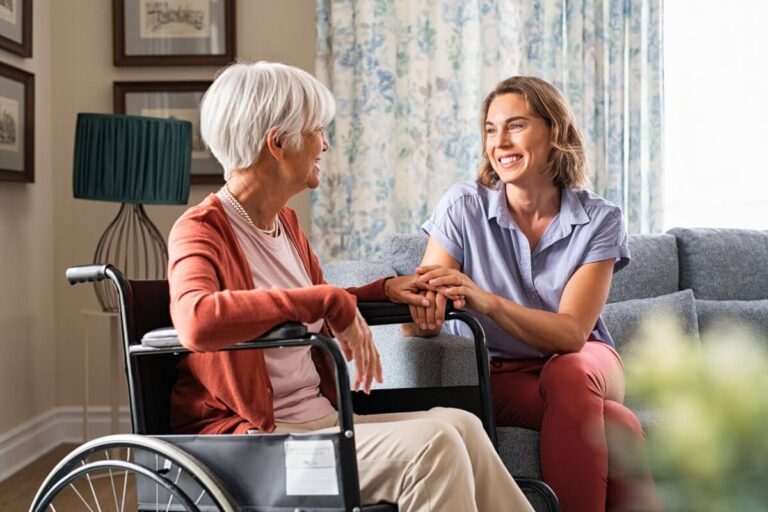Lumaflex Red Light Therapy for Aging Women: An Honest Review
All opinions and insights in this article are my own based on testing the Lumaflex on myself for the past three months.
Back on July 2, 2025, I received a random email from a representative at Lumaflex. You probably can’t imagine how many emails I get each week asking me to endorse or promote a product, and this email was much like the others and normally I might skip over it.
But I had been in Pain Management Therapy for four months, using alternative therapies such as deep tissue laser therapy, spinal de-compression, traditional physical therapy, massage, and biopsychosocial therapy. My lower back had started acting up again.
The email said, “Reaching out on behalf of Lumaflex, a pioneering leader in red light therapy devices recognized for their ability to enhance recovery, reduce inflammation, and optimize rehabilitation outcomes.”
The email caught my attention but I had a lot of questions and a healthy skepticism.
- What is red light therapy?
- Does red light therapy really work?
- What is the cost of RLT?
- Do I have the voice and platform to promote this product?
- What do my pain management folks think of RLT?
- Who are these Lumaflex people?
I replied to the email and talked to my pain management team. They encouraged me to try it because they believe the red light science!
This was the beginning of my journey with Lumaflex Red Light Therapy.
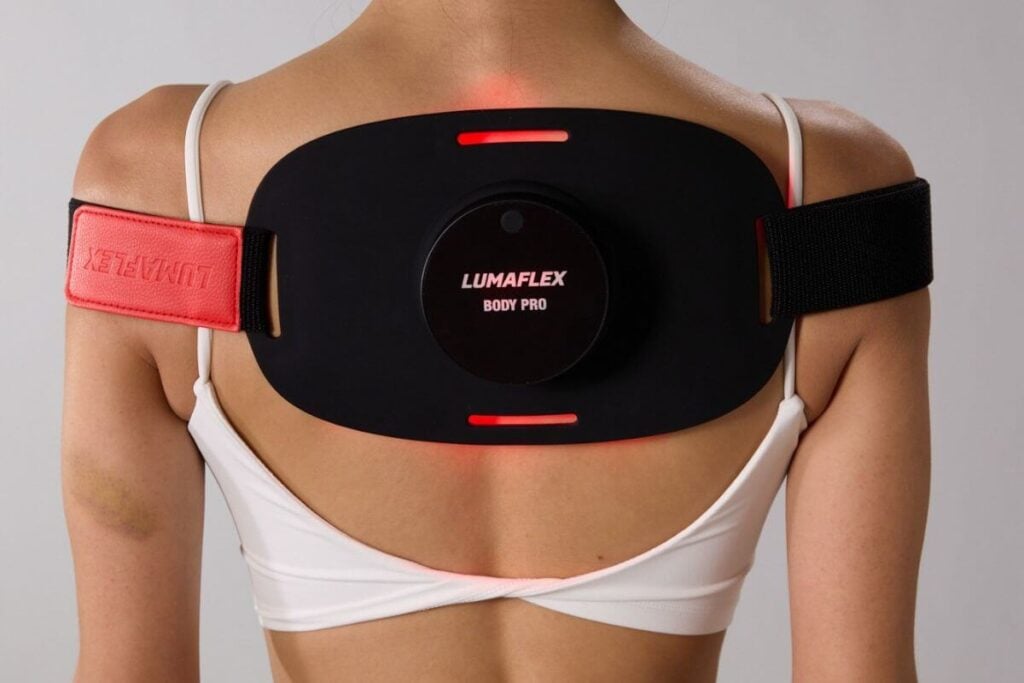
Disclaimer: The articles provided on the Sassy Sister Stuff website are intended to be educational in nature. No professional services are provided through the site and the information obtained through the site is not a substitute for a personal consultation with a qualified health professional. If you are in need of health treatment, please contact a qualified health professional directly.
This post contains affiliate links. If you make a purchase through a link, we may earn a small commission—at no extra cost to you. For more information, see our disclaimer.
Next Steps with Lumaflex Red Light Therapy
Before long, I was corresponding with John Graham Harper, Founder & CEO of Lumaflex. He provided a lot of background information about Lumaflex, but the most amazing info was how it helped him.
He was a former athlete and had many injuries—plus a brain tumor—and was led to research the power of red light therapy (RLT). It changed his life and now he’s on a mission to make recovery easier, faster, and more effective for everyone.
John said he’d had strong traction with athletes and younger demographics when he first launched and now he was positioning the product among a new demographic. The company was sharing it in the wellness and medical community to reach a wider audience.
That’s where I came in. After talking with my pain management team and John, I took a 90-minute Lumaflex course and passed the test. The company sent me a Lumaflex Body Pro to use and decide if I wanted to share it with my readers.
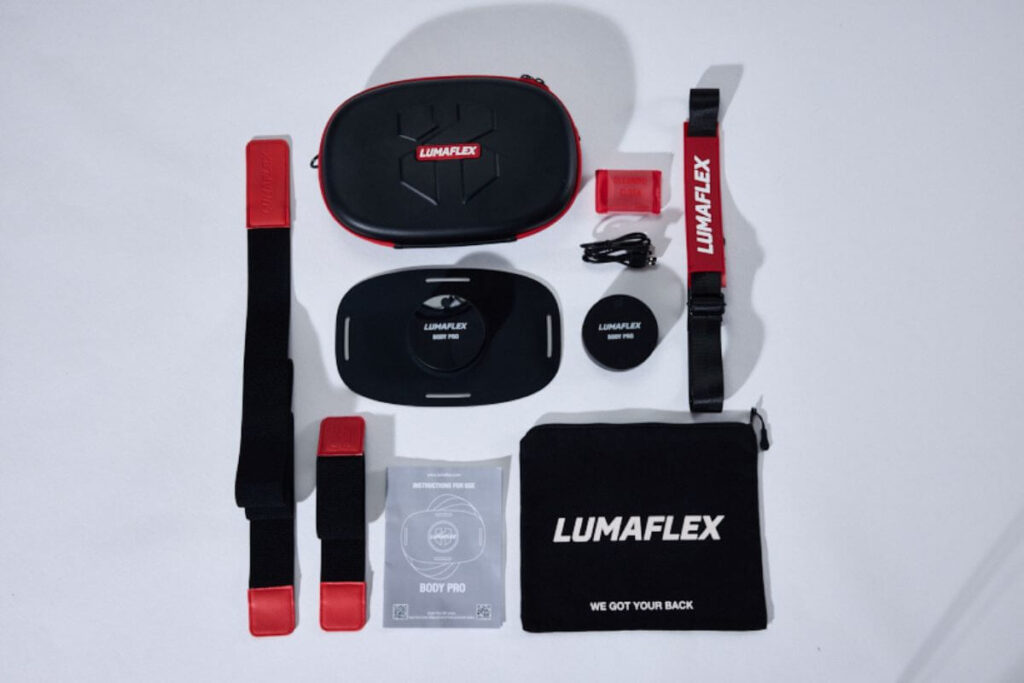
What I Learned about Red Light Therapy
After taking the course, I was able to answer all of my questions. Meanwhile, I heard someone on a TV show mention Red Light Therapy as a means to their recovery from an accident! I was certainly becoming cautiously excited about this product! It was supposed to promote energy, too… and I sure could use some more energy!! 😂 Let me share a bit about what I learned:
What is red light therapy?
Red light therapy is a treatment that uses low-wavelength red light to stimulate cells and improve health conditions. It is a natural, non-invasive healing therapy that is accessible to everyone. You use the Lumaflex for ten minutes, twice a day on any part of your body where you need to stimulate blood flow and tissue healing.
Red light therapy devices emit near-infrared (NIR) and red light, which penetrate the skin and interact with mitochondria (the energy-producing organelles in cells). This interaction stimulates cellular processes, such as increased blood flow, collagen production, and cell regeneration. Ha! Look at how much I’ve learned! 😜
Does red light therapy really work?
Yes! I can personally tell you it has helped me and there are oodles of people who are talking about the benefits of Red Light Therapy. It can help with skin conditions, pain management, wound healing, hair growth, and even cognitive functioning with little to no side effects. I’ve seen hundreds of peer-reviewed clinical studies of RLT (not that I understand all the science speak, but I get the idea:) and they are always favorable!
Pin to your Sassy Sister Stuff Board
What is the cost of RLT?
$400-$800 (*see additional information below)
Do I have the voice and platform to promote this product?
Yes! Red light therapy is incredibly effective for people in midlife and beyond. In fact, much of their clinical research and partner work globally focuses on chronic pain, inflammation, mobility, and cellular regeneration—all of which become even more relevant as we age. My current pain management routine already included some of the top modalities in pain management, and integrating RLT has absolutely complemented and enhanced my progress.
What do my pain management folks think of RLT?
All of my pain management folks knew about RLT and thought it would be an excellent addition to my care plan. I asked why it’s not used in the pain center. They explained that it would not be conducive for patients to come in for ten minutes, twice a day. Therefore, it’s better suited to be used at home. That made perfect sense to me!
Who are these Lumaflex people?
John and Peter had been very helpful before I began using the Lumaflex Pro. They are fully dedicated to educating the world about red light therapy so everyone, and anyone can have access to the healing it promotes. It is GSA approved and there has been a huge interest from the military. It’s already being used by the military at VA clinics and some bases. It’s also used in ambulances in Europe, which is really exciting because it’s on the front lines of healthcare in that region of the world.
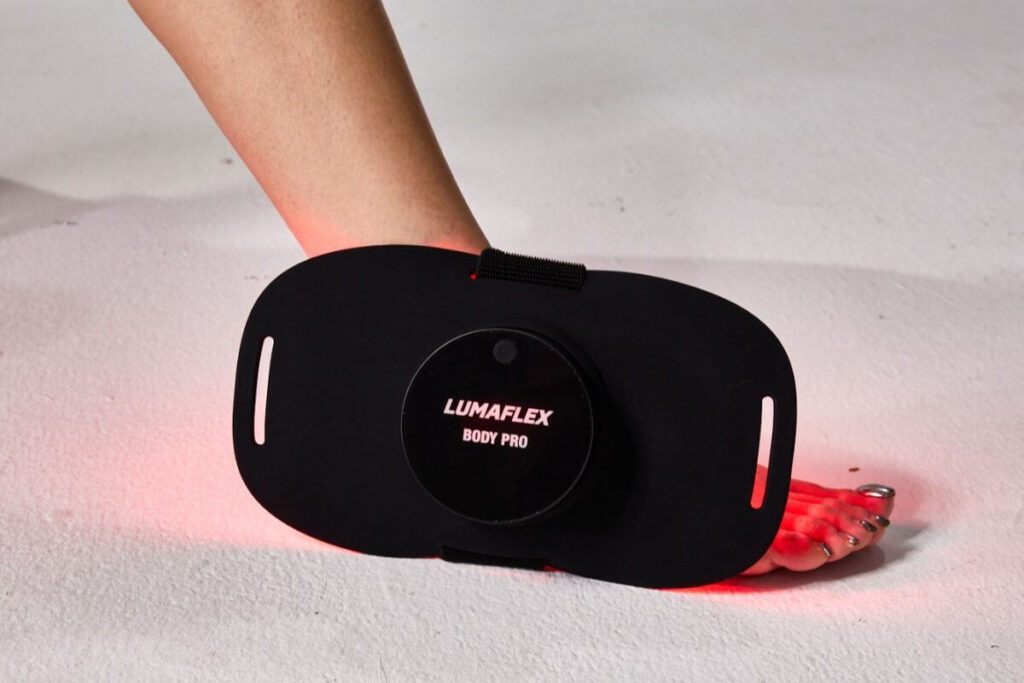
How I Used Lumaflex and What I Thought
Okay, now that I have educated you about Red Light Therapy, let me share how I used the Lumaflex Pro and what I thought about it.
I decided not to use it on my back right away because I wanted to get used to handling it first. (That was silly because it’s super easy to handle and position.) I used it for planters fasciitis that I have on my left foot. I started ten minutes, twice a day. I was going away 8 days after I started it and I thought, “There’s no way it’s going to be better by then!” I thought I’d have to take it with me.
I was WRONG!! My left foot felt better within three days! I’d had planters fasciitis for at least 30 years, but my foot felt better! I always exercise both feet at night before I go to sleep. I noticed very soon that when I did my exercises, my foot didn’t hurt! Is that unbelievable?? I kept using it until I went away and a week or so after I got home. But today my foot is still better!
Next, I started using the Lumaflex Body Pro on the rotator cuff tendinitis in my right arm. I’ve had flare-ups of tendinitis for about six years and it had been hurting again lately. I had seen my orthopedic doctor a few months ago for a steroid injection, but it was acting up again. Unfortunately, I didn’t use the RLT device as regularly this time because I’d gotten super busy and it seemed I didn’t make the time.
So I had a talking with myself—I reminded myself that it’s important to practice self-care and I am worthy of taking care of myself. So I am using the Lumaflex Body Pro on my right arm/shoulder and my right thigh where I pulled a muscle—and I’m doing it regularly because I deserve to take care of myself!
Both are getting better and I have every reason to believe they will continue to! I have not had any side effects with the red light therapy device. ☺️
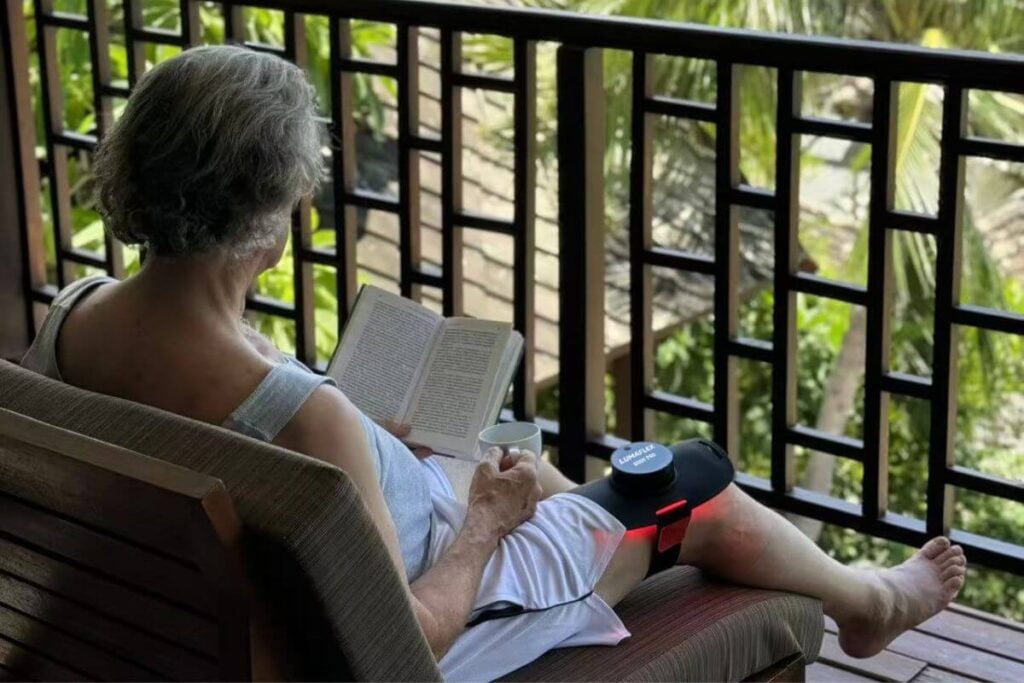
How Lumaflex is Different from Others
While I am very pleased with the Lumaflex Body Pro and I fully intend to keep using it on a regular basis, I had one question for John before I wrote this article.
I had looked online to see what other red light therapy products were available for a cost comparison. It seemed to me that the $400-$700 price would be prohibitive for many people.
There are products available to consumers for less money. In fact, some of them were significantly less. So I needed to know WHY there was such a price difference. If I could go on Amazon and get a RLT device, then why would I pay for a Lumaflex?
Well, John was able to explain this to me in no uncertain terms and it all made perfect sense. *Let me share John’s exact words:
- Purpose-built design for consistency: I hyper-focused on making a device that encourages daily use because consistency is key with RLT. Recovery and results happen faster when you use it regularly.
- Portability & size balance: We designed Lumaflex to cover a large enough surface area to be effective, but kept it portable so people can take it anywhere. Any larger, and it would be too bulky.
- Premium materials: We use liquid silicone for flexibility and comfort, ensuring direct skin contact while being sweat-proof for the Essential and fully waterproof for the Body Pro.
- Durability for real life: Building a device that’s rugged enough to travel and handle daily use was a challenge, but we wanted something people could rely on anytime, anywhere.
- Professional-grade features: Lumaflex is FDA-cleared, trusted by medical professionals, used in EU ambulances, VA clinics, and GSA-approved for military environments, and is part of clinical trials worldwide.
I think this is enough reason to understand the price and trust the Lumaflex is doing what it’s supposed to do. I also like that you can use the Lumaflex on all body parts.
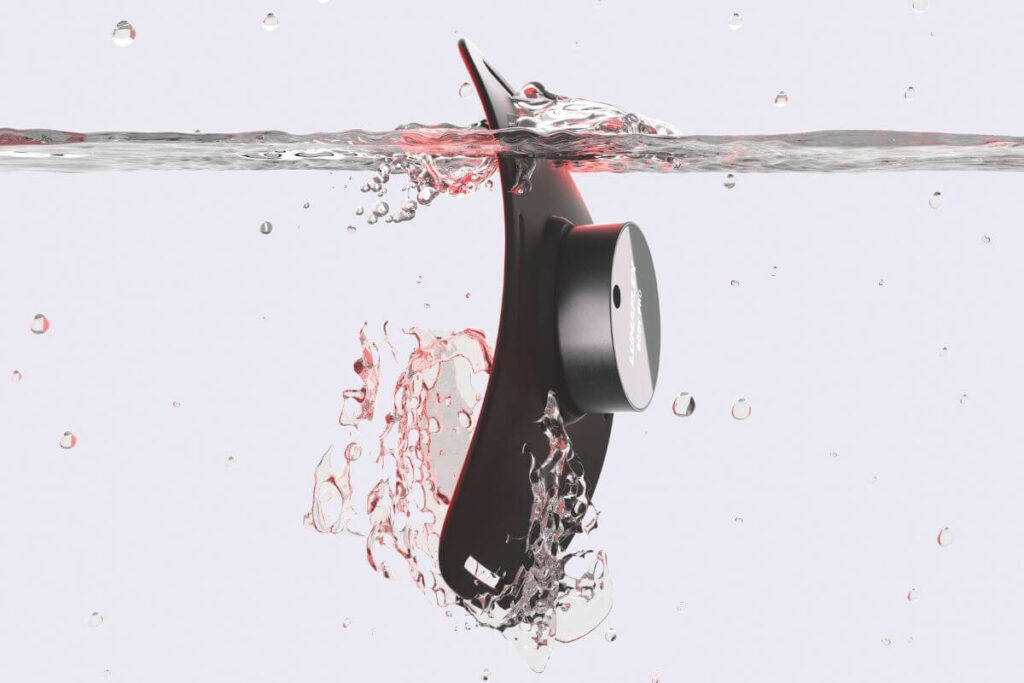
The Impact of Light on Our Biology
For more information, you may want to watch this very recent YouTube video about Lumaflex. Even though I went through the Lumaflex Academy, passed the test, and have used the Lumaflex for three months, it was a great refresher. Lumaflex is partnering with Equinox and this was a seminar for their coaches and trainers.
Lumaflex Seminar | The Impact of Light on Our Biology | September 26, 2025
Peter Forhan — photobiomodulation expert and author of Light Bodies — delivered the seminar to the coaches and training team at Equinox, teaching the science, protocols, and real-world application of red light therapy.
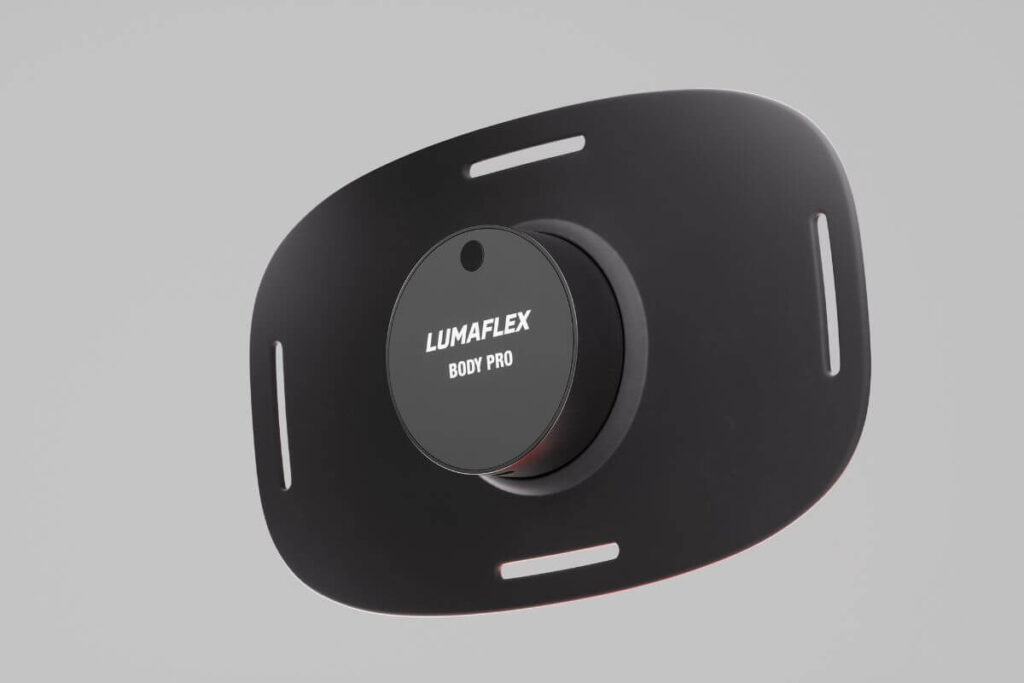
FAQs About Red Light Therapy
These are some Frequently Asked Questions about red light therapy, plus the answers. Feel free to email me with any other questions! My email is susan@sassysisterstuff.com.
Q1: What are the main benefits of red light therapy?
Red light therapy may help reduce inflammation, boost collagen production, and improve skin tone and texture. It’s also used to support muscle recovery, joint health, and overall well-being by enhancing circulation and cellular energy.
Q2: How often should you use red light therapy?
Most people see the best results with consistent use — typically 3–5 times a week for 10 minutes per session, 2 times per day. Frequency can depend on your goals and the type of device you use, so it’s always smart to start slow and follow the manufacturer’s recommendations.
Q3: Is red light therapy safe for daily use?
Yes, red light therapy is considered safe for most people when used properly. It’s non-invasive and doesn’t emit UV rays. However, individuals with certain medical conditions or those taking photosensitive medications should consult a healthcare provider first.
Q4: Can red light therapy help with wrinkles or aging skin?
Yes — that’s one of its most popular uses! Red light stimulates collagen and elastin production, which can reduce the appearance of fine lines and improve skin firmness over time. Consistency is key for visible results.
Q5: Are there any negatives to red light therapy?
Red light therapy has very few side effects, but it may cause some skin sensitivity and eye irritation. The skin sensitivity is usually mild and resolves within a few hours. Avoid looking directly at the beams prevent the eye damage. It’s important to use the device as directed.
Q6. Do cheap red light therapy devices work?
There are lower-cost RLT devices available, but they do not offer therapeutic or clinically documented wavelengths or red and near-infrared light. Instead they provide illumination that is of little or no value. They usually have weak LEDs so the light does not penetrate deep into the tissues you are targeting, making them less effective.
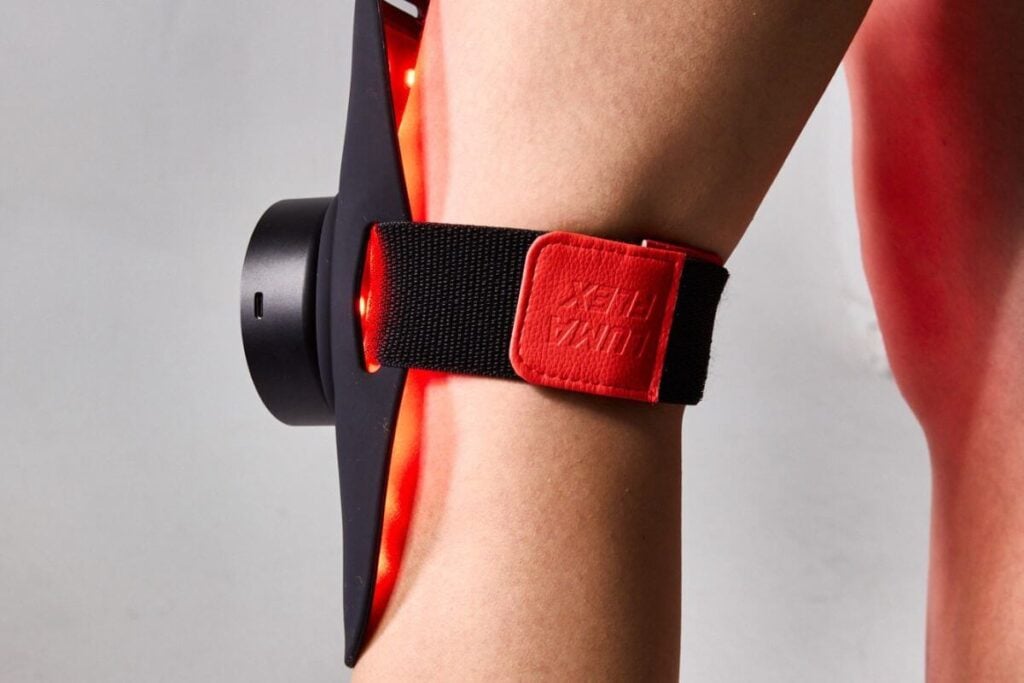
Final Thoughts
I am glad the folks at Lumaflex sent me that email last July and introduced me to red light therapy. It was perfect timing since I was in pain management therapy and focused on healing. I really like the product!
I have been very impressed with the results of the RLT and feel many of you who are suffering with fibromyalgia, arthritis, muscle injuries, inflammation, and other “mature” issues would benefit from using it.
According to the Cleveland Clinic, RLT may also help osteoarthritis of the knee, carpal tunnel syndrome, cold sores, chemotherapy side effects, oral mucositis, depression, seasonal affective disorder (SAD), sun-damaged skin, age spots, collagen production, and even reducing wrinkles.
If you are interested in a Lumaflex device, you can get a 10% discount with the code SUSAN at the Lumaflex website!
Want to read more about wellness as a middle-age and senior woman? Check out these Related Articles
- Staying Healthy After 60 (My Best Tips)
- 11 Ways to Improve Your Physical Health Now
- Wellness Routines That Are Actually Sustainable in Real Life
- 50 Empowering Habits to Unlock Your Best Self
Love to ALL! ~ Susan





